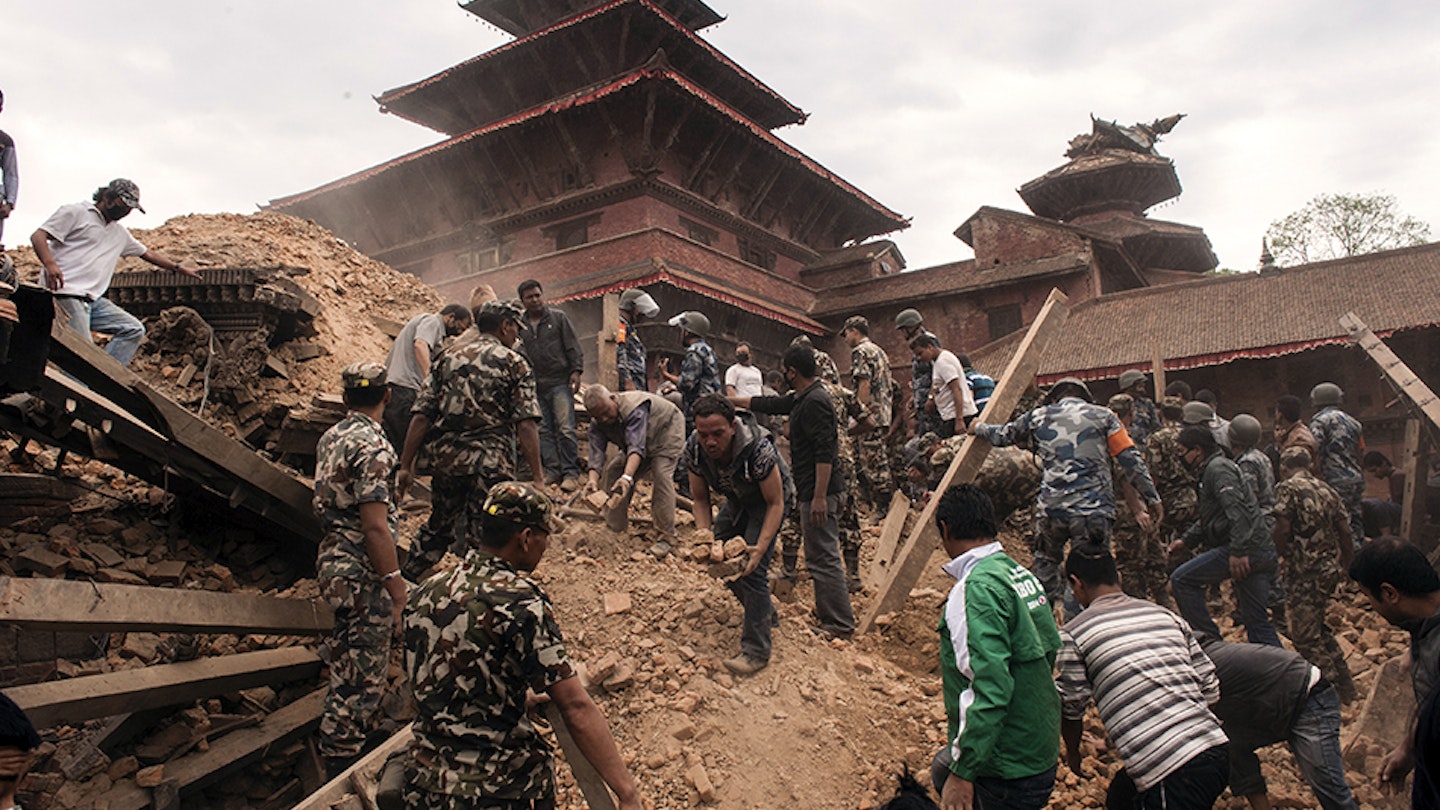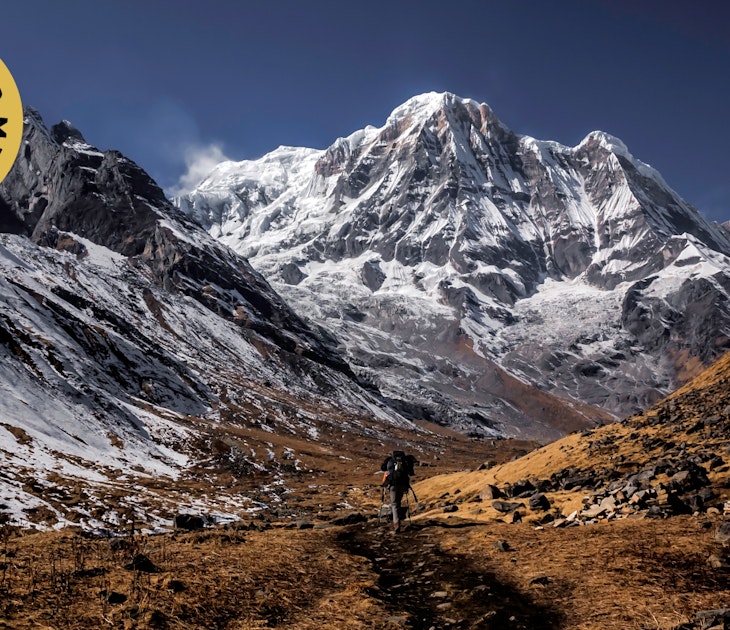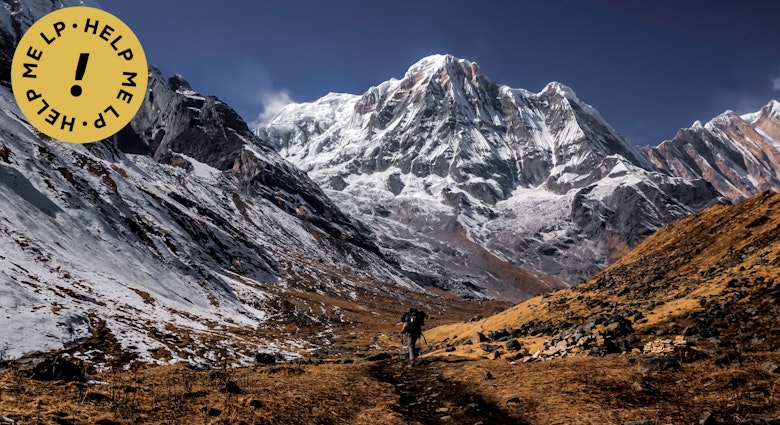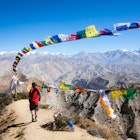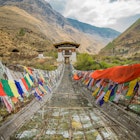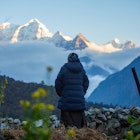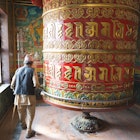
Decades of predictions by seismologists about an impending ‘big quake’ for Nepal have been proved tragically accurate. At 11.56am on Saturday 25 April, a massive 7.8 magnitude tremor hit the Kathmandu Valley, centred on Gorkha district, just north of the main highway between Kathmandu and Pokhara. In the initial tremor, and in the aftershocks that followed, whole villages were flattened and avalanches and landslides swept over climbers and trekkers. More than 1000 deaths were reported in Kathmandu alone and many of Nepal’s most famous landmarks were reduced to rubble.
The human toll
As of Tuesday 05 May, the official death toll had exceeded 7000, with government sources predicting that the final toll could climb above 10,000. The United Nations is reporting that 8 million people are directly affected by the earthquake, with 1.4 million in urgent need of food aid and shelter. Transport and infrastructure have been severely affected and tent cities have been established across the affected area, with governments from as far afield as Australia and the UK providing relief aid.
Although Kathmandu airport reopened shortly after the quake, most flights currently arriving and departing are part of the relief effort, with the Indian, Australian and British air forces providing aircraft to deliver aid and to transport their citizens to the nearest safe destination for transfers home. Many roads are damaged or blocked by landslides across the affected area and large parts of central Nepal are still without electricity or phone connections.
A more pressing problem for many local people is the dwindling supply of food and potable water. Outbreaks of waterborne diseases are already being reported around the Kathmandu Valley, with health experts issuing warnings about the risk of epidemics due to the consumption of contaminated food and drink. The problems appear to be most acute in rural villages and in the shanty towns occupied by poor families in and around Kathmandu, where houses were simply not built robustly enough to withstand the force of the quake.
Foreign travellers caught in the disaster
Thousands of trekkers and tourists are still unaccounted for following the earthquake, and widespread damage to telephone and internet networks has left many families facing a long, worrying wait for news. Although reports are coming in from travellers who have been able to make contact with friends and relatives back home, the first reports of foreign casualties are also emerging, with deaths reported from South Africa, Australia, Britain, China, India, Estonia, America and Japan. The EU envoy to Nepal has reported that more than 1000 European citizens are still unaccounted for.

At Everest Base Camp, 18 climbers and guides were killed as a massive avalanche triggered by the earthquake surged down the Khumbu Icefall, covering large parts of the tent village. Documentary film-maker Thomas Taplin and Google executive Dan Fredinburg were amongst those lost in the worst mountaineering disaster to ever hit the Everest region. North of Kathmandu, a second landslide at Langtang has killed more than 100 people, destroying most of Langtang village and blocking roads, leaving hundreds of trekkers trapped. Reports are coming from the Trekking Agencies' Association of Nepal (taan.org.np) that trekkers are being rescued and airlifted back to Kathmandu from the worst affected areas. Nepali police have released a list of foreign victims of the disaster (ekantipur.com) but this is likely to grow in the coming days and weeks.
A legacy in rubble
Until the morning of Saturday 25 April, the towering temples and palaces of the Kathmandu Valley were the crown jewels of a nation rich in cultural treasures, giving the Nepali capital a skyline as instantly recognisable as Paris or New York. The entire Kathmandu Valley was added to the UNESCO World Heritage list in 1979 in recognition of the importance of such a vast concentration of medieval architecture in one spot.

The first massive shock which hit the valley wiped out 600 years of history in seconds, reducing many of the most iconic temples in Nepal to tinder sticks and rubble. Locals watched in horror as pagodas crumbled to dust in Kathmandu Durbar Square, Patan Durbar Square and Bhaktapur Durbar Square. Temple spires toppled at Swayambhunath and Kathmandu’s distinctive Dharahara Tower collapsed into a pile of brick dust, entombing dozens of sightseers inside. Initial reports put the death toll at 180 at that site alone.
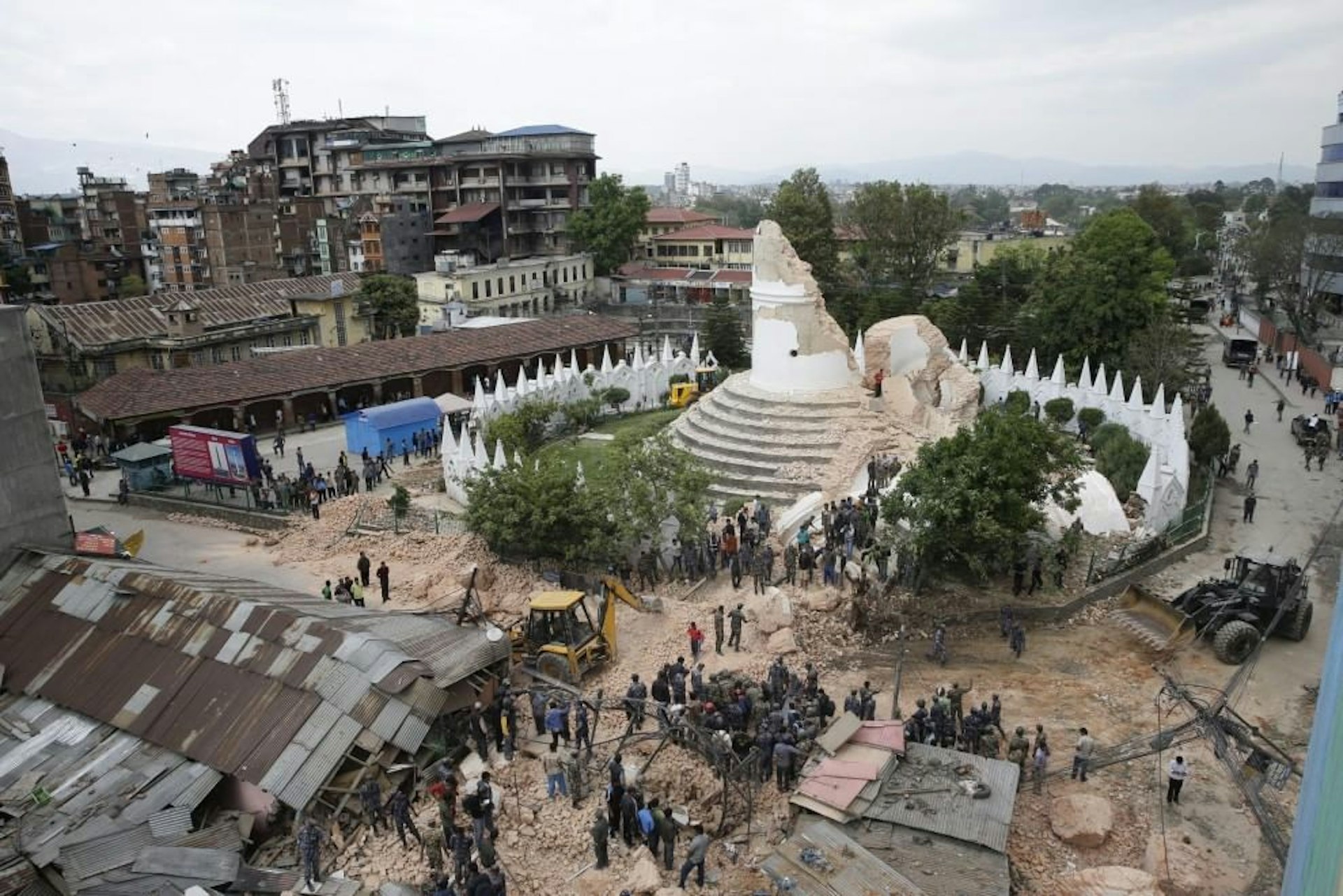
From the first images coming out from the disaster, it would be easy to assume that the devastation was total. This was certainly the impression given by many news reports in both Nepali and international newspapers. However it is now becoming clear that many monuments defied the odds and emerged unscathed from the disaster.
Thanks to videos and photos posted on social media, we know that the main stupa at Swayambhunath still stands, with damage restricted to smaller buildings in the compound. A similar situation stands at Changu Narayan, where the main temple is undamaged but outlying temples have collapsed. Initial reports suggested that Patan’s Durbar Square was obliterated but drone footage has since shown that many structures are still standing, including the iconic stone Krishna Temple and the Royal Palace housing the Patan Museum.
Similar reports that Kathmandu Durbar Square was entirely flattened and that half of buildings in Bhaktapur were levelled, with 80% of temples destroyed, also seem to be exaggerated, though the damage is severe. A drone flyover (bbc.co.uk) of affected sites has shown that many of the Kathmandu Valley's landmarks are still standing. Here are links to more video footage taken at the scene since the disaster.
- Kathmandu (youtube.com)
- Patan (youtube.com, and new footage here youtube.com)
- Bhaktapur (youtube.com, and at the time of the quake here bbc.co.uk)
Where can I find news?
After a slow start, when the internet was rife with rumour and hearsay, a number of official sources for information have now been established. The Nepali government has set up a series of emergency hotline numbers for information on the crisis:
- Enquiries on Kathmandu and around: +97714200258; +97714200105
- Enquiries on the Everest region: +9779852827777
Most foreign governments with citizens affected by the disaster have also established emergency telephone numbers and webpages for news and information, including the following:
- UK Foreign & Commonwealth Office (gov.uk)
- US State Department (travel.state.gov)
- Australian Department of Foreign Affairs & Trade (smarttraveller.gov.au)
Following the death of Dan Fredinburg, Google has set up a digital Person Finder (google.org/personfinder) using crowd-sourced information, where people can post news or find news on missing people.
Lonely Planet is also posting news as it comes in on the Thorntree forum.
Social media is another invaluable resource for news on the disaster, which is often more detailed and accurate than reports in the media as posts are coming directly from people who are at the scene. On Facebook, the Stay Strong Nepal page (facebook.com/earthquakenepal2015) is pulling together information on the disaster, and many travellers and Nepalis are posting on Twitter using the hashtags #nepalearthquake (twitter.com/hashtag/nepalearthquake) and #nepalquake (twitter.com/hashtag/nepalquake).
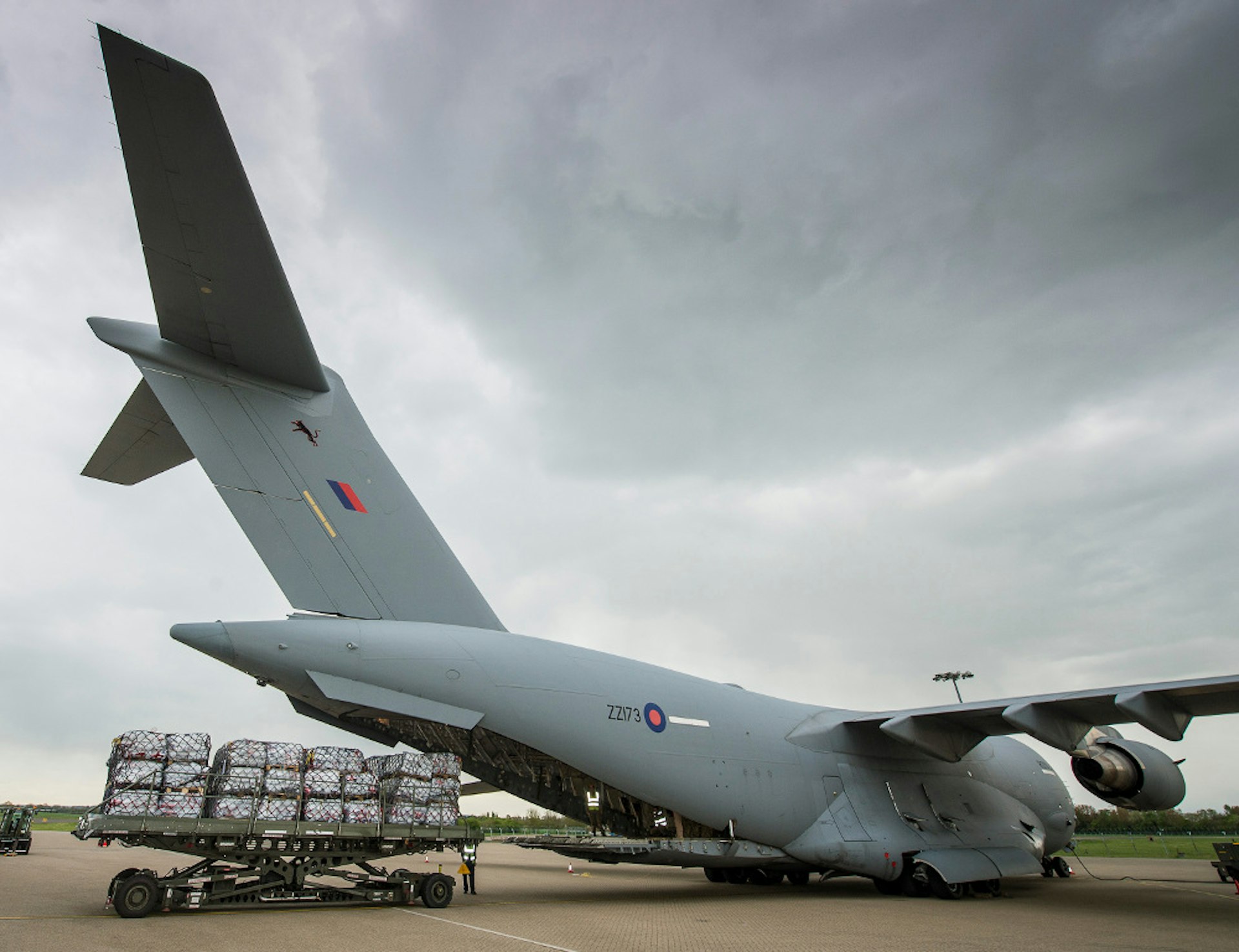
Should I travel to Nepal?
Nepal will certainly need the income that tourism brings as it attempts to recover from this disaster, but at this point in time, most foreign governments are advising their citizens against ‘all but essential travel’ to Nepal, and travellers who ignore these official travel warning will almost certainly not be covered by their travel insurance, which is a risky position to be in when visiting a disaster area. Flights to Kathmandu are severely disrupted, with most daytime slots allocated to relief flights, and most airlines are encouraging travellers with existing bookings to cancel or rebook.
If you do visit Nepal, expect infrastructure to be severely disrupted, with supplies of food, power and water restricted and transport options limited. Hiring a private car and driver or taxi may be the most practical way to get around. From reports so far, Pokhara seems to have escaped without widespread damage and is probably the best place to base yourself until the initial emergency response is over.
Can I help?
Many people feel a strong emotional attachment to Nepal and are desperate to do something to help, but an influx of well-meaning but inexperienced individuals is likely to hinder rather than help the relief effort in a nation already experiencing shortages of food and water. Unless you have specific skills relating to disaster relief and emergency aid, the most valuable contribution you can make is to contribute money to the relief effort. If you do have skills that would help the earthquake effort, contact relief organisations before travelling to Nepal.
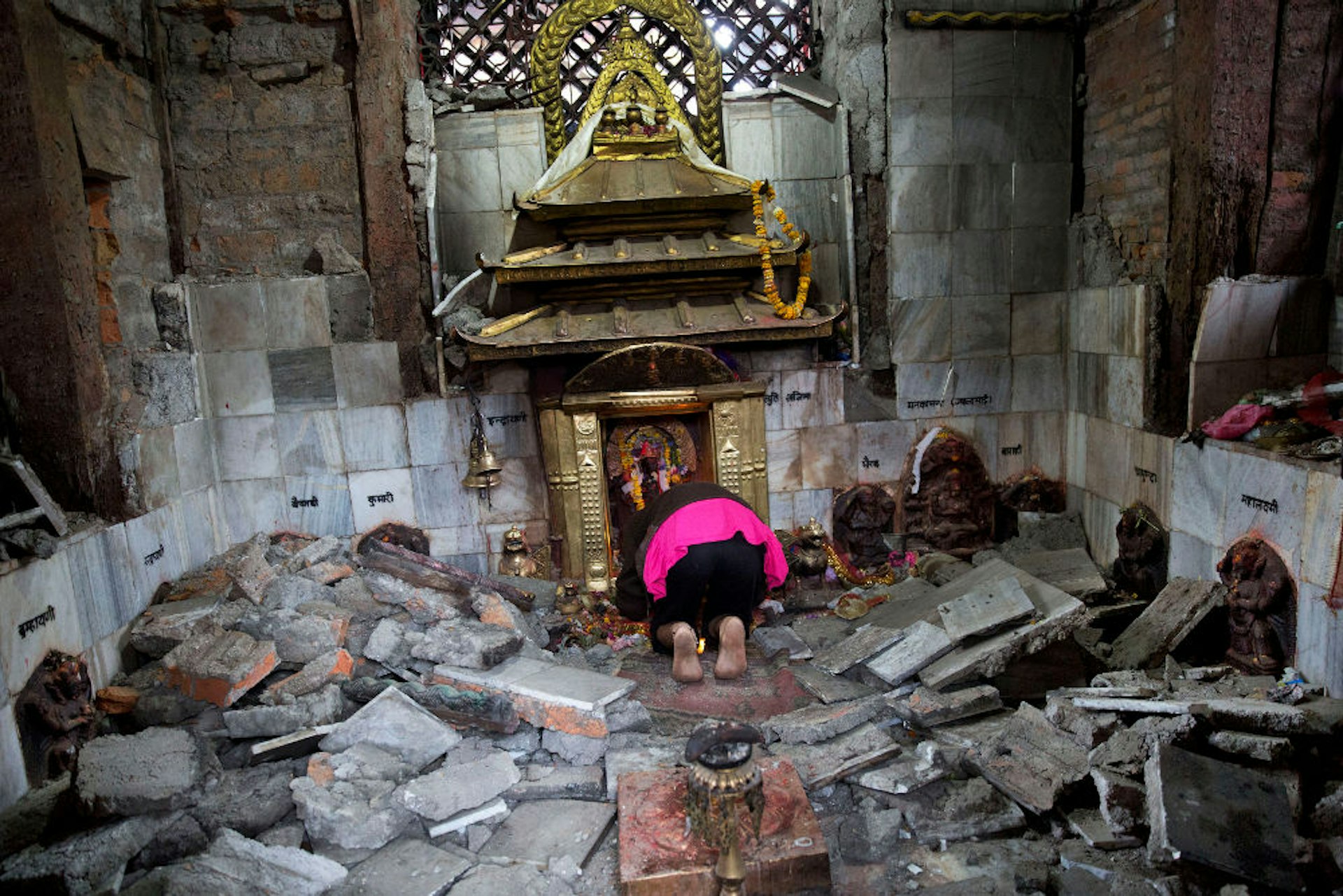
One way you can contribute directly without travelling to Nepal is to participate in DigitalGlobe’s crowd-sourcing campaign (digitalglobeblog.com) to map the extent of the disaster using satellite imagery to help guide emergency teams to affected areas.
Should you wish to make a donation, the first port of call should be your home nation’s official relief campaign. In the UK, the Disasters Emergency Committee (dec.org.uk) has established an official Nepal Earthquake Appeal to raise funds for emergency aid. The Red Cross (redcross.org) has also established an official Nepal Earthquake Relief Fund through its representatives worldwide.

